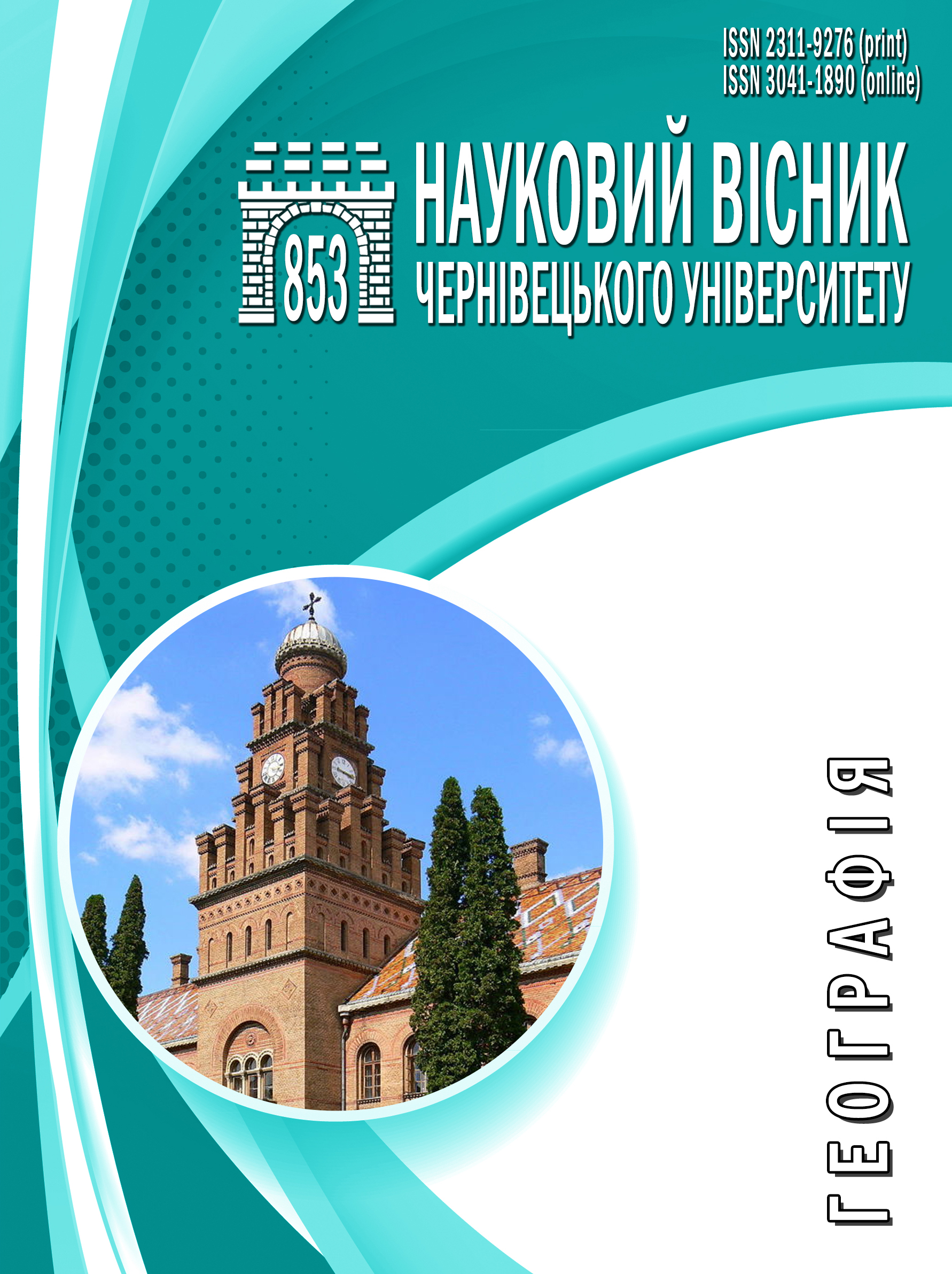Проблеми визначення перших порядків річок на прикладі річки Путилка
DOI:
https://doi.org/10.31861/geo.2025.853.93-100Ключові слова:
річкова система,, порядкові структури,, метод Ржаніцина,, метод Штралера,, річки першого порядку,, гідрографічне моделювання, дистанційне зондування,, супутникові знімки,, PALSAR,, Sentinel-2,, рельєфне моделювання,, витоки річок,, картографічний аналіз.Анотація
У статті досліджено особливості визначення річок першого порядку в гірських умовах на прикладі витоків річки Путилка (Чернівецька область). Використано порядкові методи Ржаніцина та Штралера для аналізу ієрархії річкової системи. Дослідження проводилося із застосуванням експедиційних даних, картографічних матеріалів, супутникових знімків Sentinel-2 та даних рельєфного моделювання (PALSAR). Для верифікації результатів також використовувалися зображення з карт Google.
Результати аналізу показали, що розбіжності між польовими даними, змодельованими потоками та картографічними матеріалами є незначними. Однак річки, які попередньо класифікувалися як першого порядку, у деяких випадках можуть належати до другого порядку.
Дослідження демонструє важливість комбінованого підходу, що включає дистанційне зондування, рельєфне моделювання та експедиційні дослідження. Це дозволяє підвищити точність ідентифікації річкових потоків та визначення їх порядків. Особливу увагу приділено вдосконаленню критеріїв класифікації річок першого порядку для мінімізації.
Посилання
1. Gravelius, H. (1914) Morphometry of Drainage Bassins. Elsevier, Amsterdan.
2. Horton, R. E. (1945), Erosional development of streams and their drainage basins: hydro-physical approach to quantitative morphology, Geological Society of America Bulletin 56 (3): 275-370
3. Strahler, A. N. (1957), Quantitative analysis of watershed geomorphology, Transactions of the American Geophysical Union 8 (6): 913-920.
4. Shreve, R., (1966), Statistical Law of Stream Numbers, J. Geol., 74, 17-37.
5. Prof. Dr. Peter Kogut, https://eos.com/blog/types-of-remote-sensing/
6. ASF DAAC 2015, ALOS PALSAR_Radiometric_Terrain_Corrected_hi_res; Includes Material ©JAXA/METI 2007.
7. Li, J.; Ma, R.; Cao, Z.; Xue, K.; Xiong, J.; Hu, M.; Feng, X (2022). Satellite Detection of Surface Water Extent: A Review of Methodology. Water 2022, 14, 1148. https://doi.org/10.3390/w14071148
8. L. WANG and H. LIU (2005), An efficient method for identifying and filling surface depressions indigital elevation models for hydrologic analysis and modelling, International Journal of Geographical Information ScienceVol. 000, No. 000, 0 Month 2005, 1–21
9. O'Callaghan, J.F. / Mark, D.M. (1984): 'The extraction of drainage networks from digital elevation data',Computer Vision, Graphics and Image Processing, 28:323-344.


